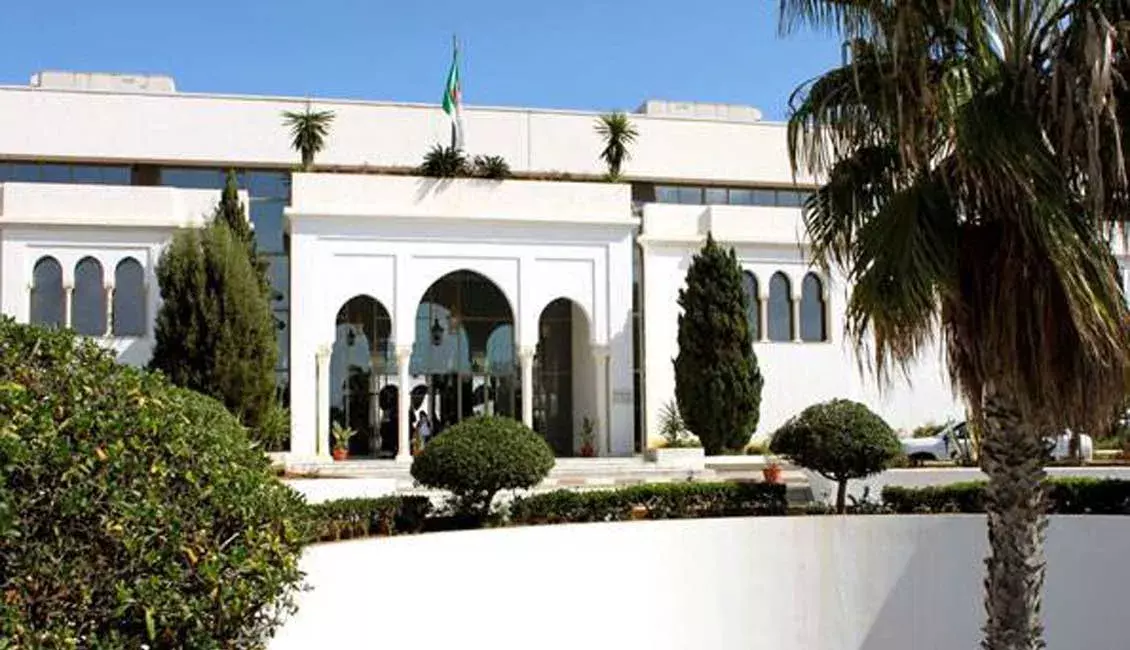
Palais de la Culture Moufdi Zakaria
Overall Rating: ⭐⭐⭐⭐☆ (4/5)
Rating Breakdown:
✔ Cultural Significance – ⭐⭐⭐⭐⭐ (5/5)
✔ Architectural Beauty – ⭐⭐⭐⭐⭐ (5/5)
✔ Accessibility – ⭐⭐⭐☆☆ (3/5)
✔ Event Variety – ⭐⭐⭐☆☆ (3/5)
✔ Maintenance & Preservation – ⭐⭐⭐⭐☆ (4/5)
Weather
- Algiers experiences a Mediterranean climate characterized by hot, dry summers and mild, wet winters, making it suitable for visits throughout the year.
Tags
- Cultural Center, Exhibitions, Conferences, Arab-Muslim Architecture, Panoramic Views
Timings
- The Palais de la Culture Moufdi Zakaria typically operates from 9:00 AM to 5:00 PM, Sunday through Thursday. However, hours may vary depending on scheduled events and exhibitions. It's advisable to check the official website or contact the venue directly for the most current information.
Time Required
- A visit can range from 1 to 3 hours, depending on the exhibitions and events taking place.
Entry Fee
- Entry fees vary based on the event or exhibition. Some events may be free, while others require a ticket purchase. It's recommended to consult the official website or contact the venue for specific pricing details.
Things to See & Do
- Art Exhibitions: Explore rotating art displays featuring local and international artists.
- Conferences and Workshops: Attend various cultural and scientific seminars and workshops.
- Architectural Appreciation: Admire the neo-Moorish design by architect Bachir Yellès, blending traditional Arab-Muslim elements with contemporary architecture.
- Panoramic Views: Enjoy sweeping views of Algiers from the Annassers plateau.
Best Time to Visit
- Visiting during major cultural events or exhibitions enhances the experience. Additionally, spring and autumn offer pleasant weather for exploring both the indoor and outdoor areas of the palace.
Nearest Parking Spots
- The palace offers on-site parking facilities for visitors. Given the popularity of events, arriving early is recommended to secure a spot.
Overview
- Inaugurated on November 1, 1983, to commemorate the 30th anniversary of Algeria's liberation war, the Palais de la Culture Moufdi Zakaria stands as a beacon of cultural and artistic expression. Perched 139 meters above sea level on the Annassers plateau, it provides a panoramic vista of Algiers. The palace serves as a hub for exhibitions, conferences, and houses the Algerian Ministry of Culture. Its design, a creation of painter and architect Bachir Yellès, earned accolades for exemplifying Arab-Muslim architectural heritage.
- Named after Moufdi Zakaria, the esteemed Algerian poet who penned the national anthem "Kassaman," the palace embodies Algeria's rich cultural and historical tapestry. Its establishment aimed to provide a dedicated space for cultural and scientific events, reflecting the nation's commitment to fostering the arts and knowledge.
- Check Event Schedules: Consult the official website or contact the palace to stay informed about current and upcoming events.
- Photography: Capture the architectural beauty and scenic views; however, verify any restrictions, especially during exhibitions.
- Accessibility: The venue is equipped to accommodate visitors with mobility challenges.
- Language: While Arabic is the primary language, staff members often speak French and English, facilitating communication for international visitors.
- By Car: Accessible via major roads leading to the Annassers plateau in Kouba.
- By Public Transport: Utilize local buses or taxis directed towards Kouba or El Annasser.
- By Cable Car: The Oued Kniss (Kouba) cable car provides a direct route to the palace, offering a scenic ascent.